The Galton board or Galton machine (QUINCUNX) is named after Sir Francis Galton, an English mathematician and statistician who developed it in the late 19th century to explain some statistical concepts. Sir Francis Galton was a cousin of Charles Darwin and was greatly influenced by Darwin’s work on evolution and natural selection. QUINCUNX: The word comes from the Latin ‘quinque,’ five. The distribution of the pegs resembles that of the dots on the No. 5 face of a die.
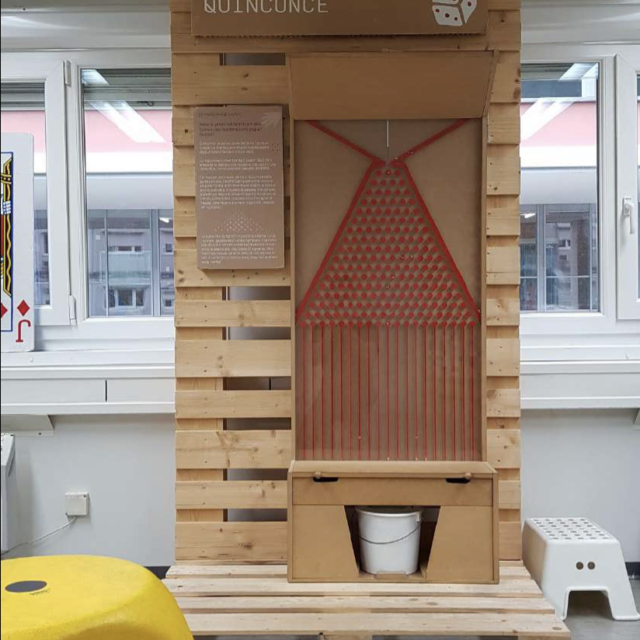
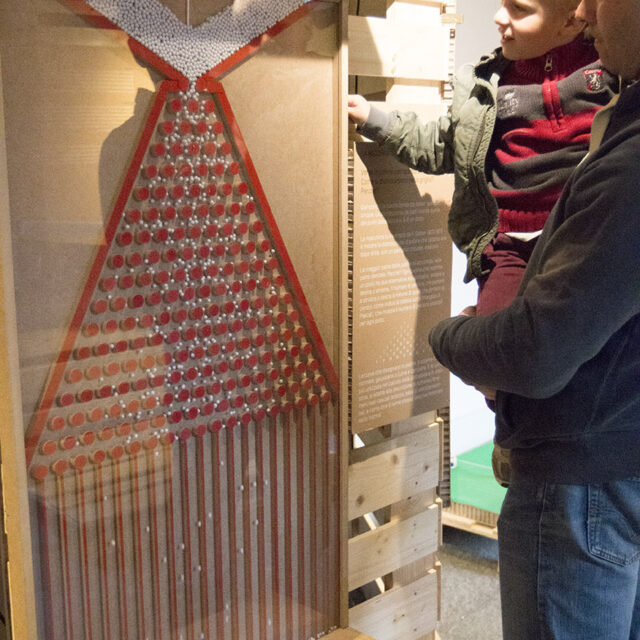
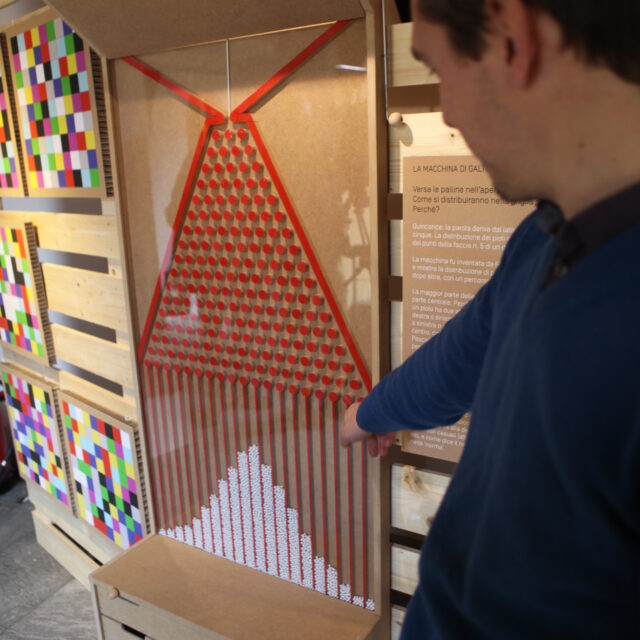
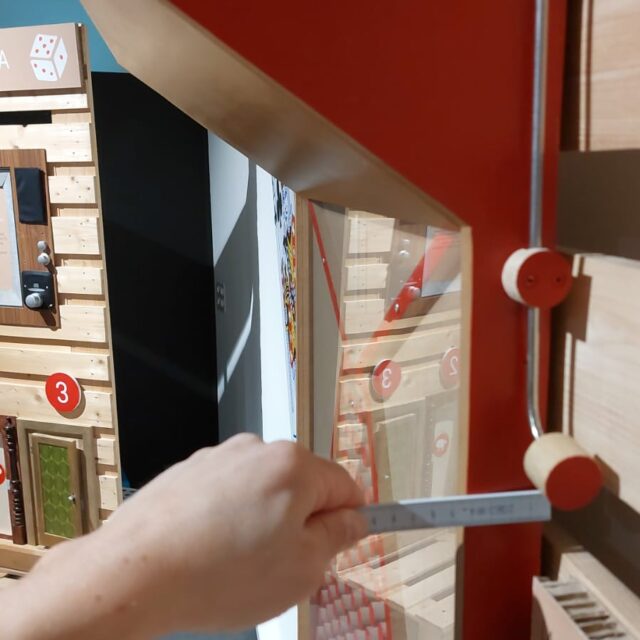
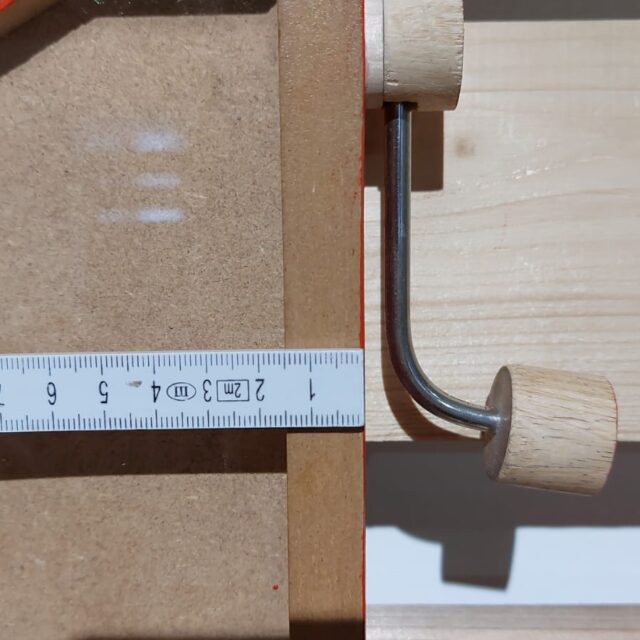
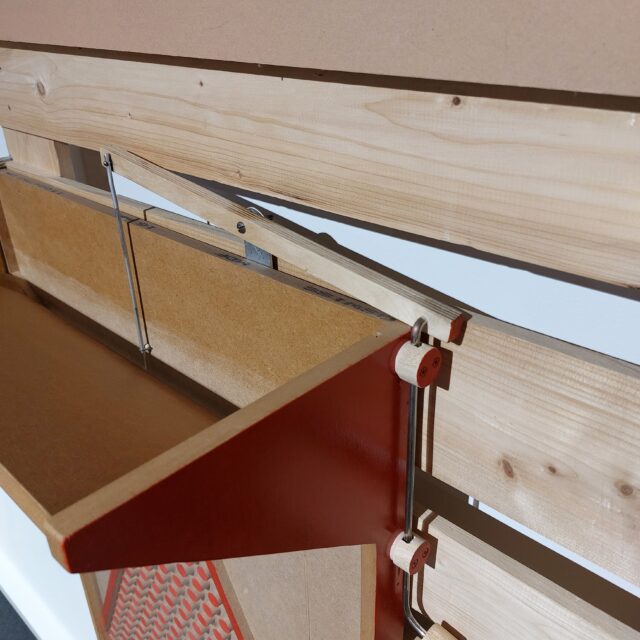
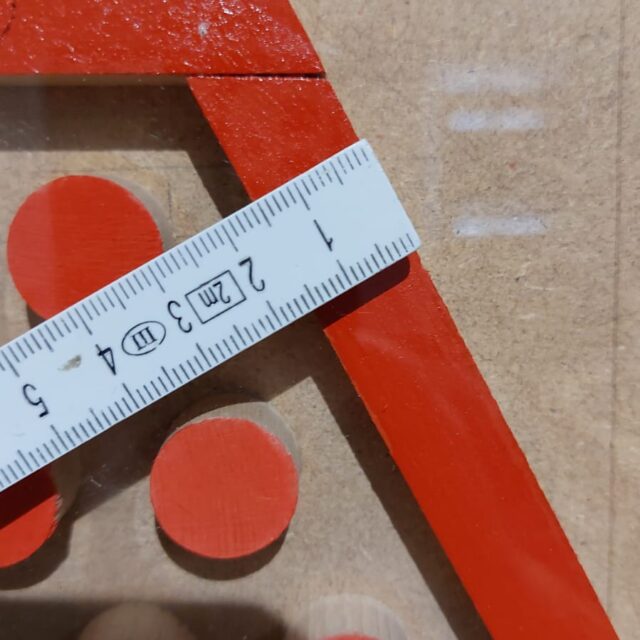
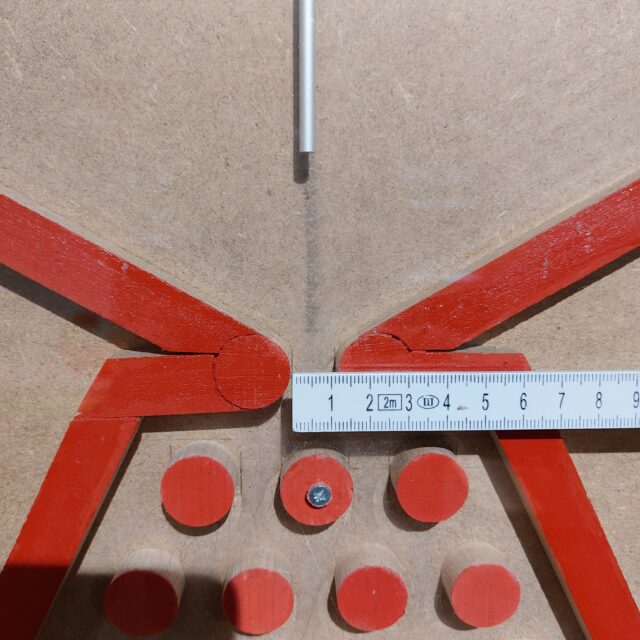
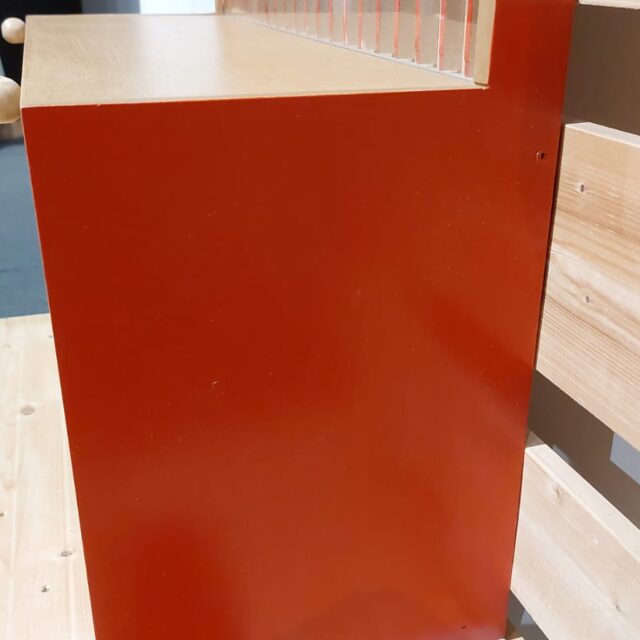
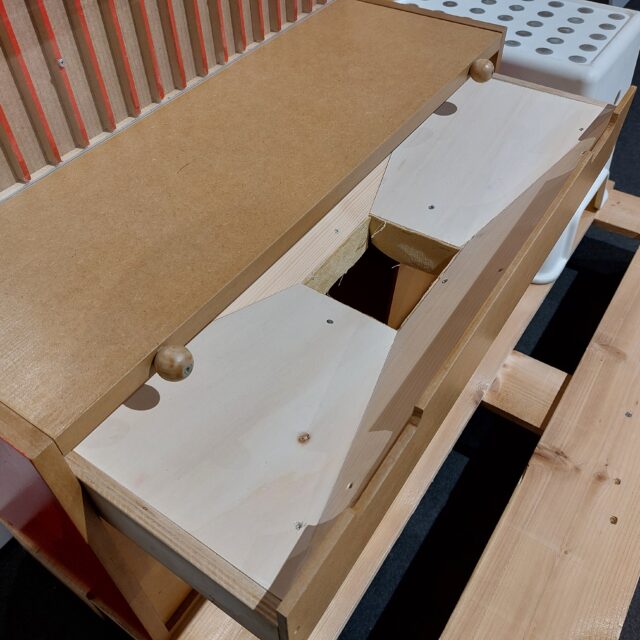
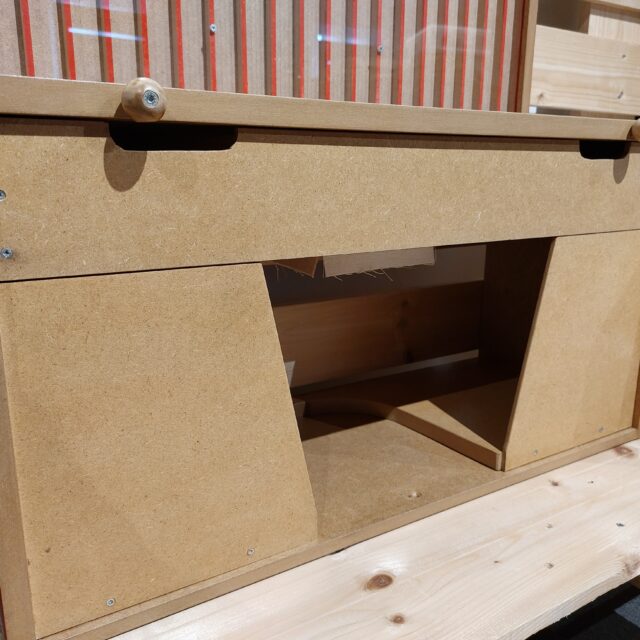
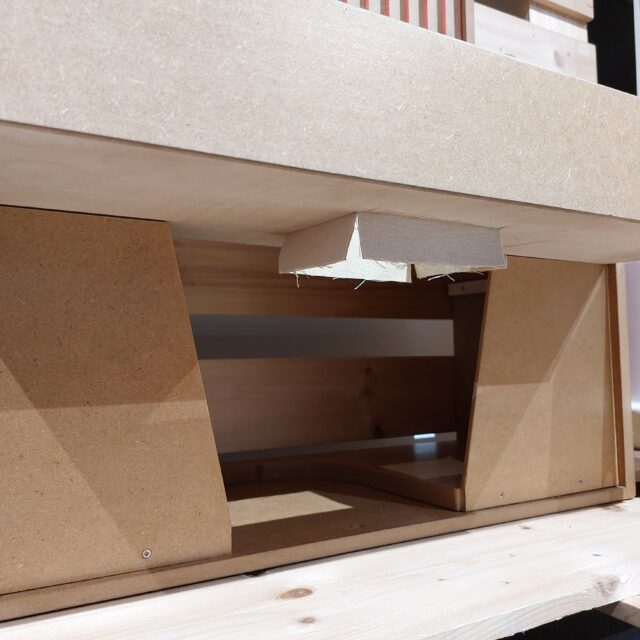
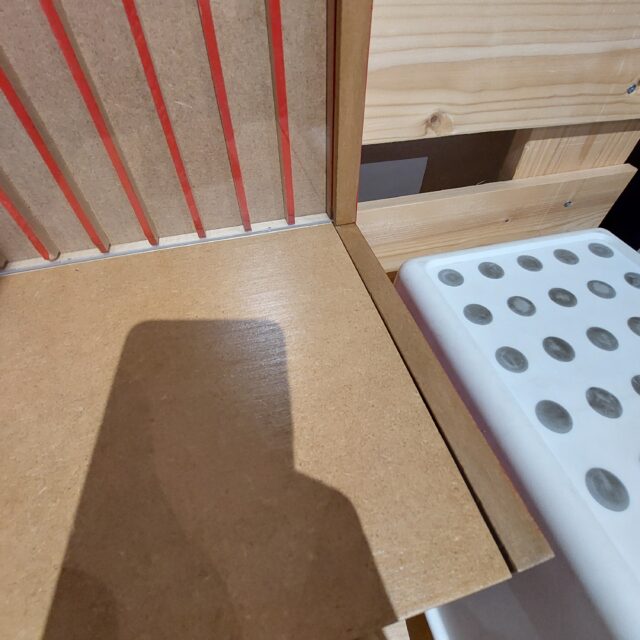

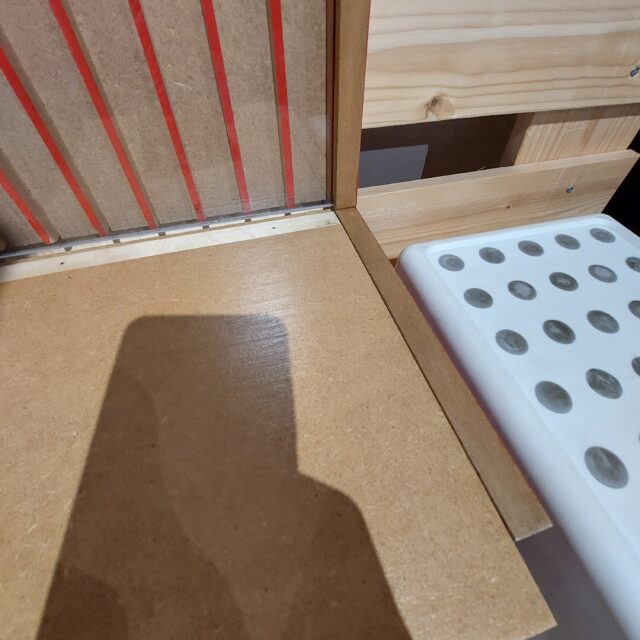
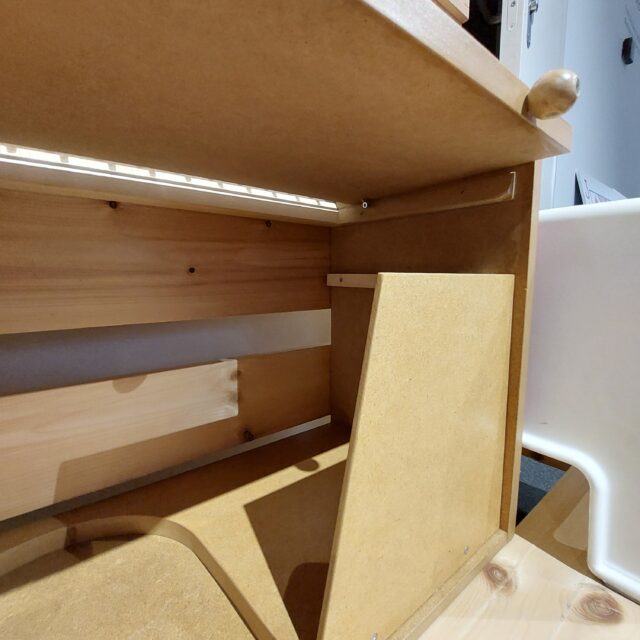
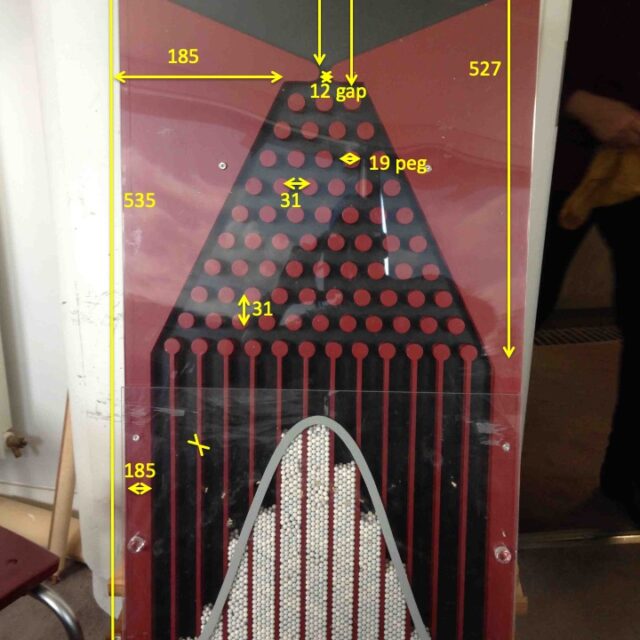
How to play
Pour the balls into the opening at the top. Try to guess how they will be distributed and why. Once all the balls have fallen and are in place, open the base and have the balls collected in the bucket. Repeat the operation. In the version made for DIN and offered here, there is a lever that, when operated in a vertical motion, allows the balls not to block the funnel opening.
Most of the balls accumulate in the middle part. Why? Each ball that encounters a peg has two equiprobable alternatives: going left or right. The number of paths leading left or right is fewer than those leading to the center, as indicated by the table below (Tartaglia’s triangle), which shows the number of possible paths for each rung:

The top of Galton’s machine, the balls fall haphazardly and chaotically but, “as if by magic,” at the base they are funneled into different boxes, ALWAYS forming the outline of a “bell” known as a Gaussian or normal distribution. How is this regularity justified? On each rung the individual ball can “decide” to bounce left or right. If the ball “wanted” to go to the last square on the right, it would have to “decide” to always bounce to the right. In other words, there is only one path that takes the ball to the last square on the right. The same is true for the last square on the left. Instead, there are many more paths that take the ball to the middle squares.
For example, one bounce to the right followed by one to the left and so on, bring the ball to the center square. But also: two bounces to the right and two to the left and so on bring the ball to the center square. In general, it is enough that the number of steps/rebounds made to the right is equal to the number of steps/rebounds made to the left for the ball to end up exactly in the center square.
If there were only 4 layers of pegs, the number of paths leading to exactly the center square would be 6, as shown in the last row of the Tartaglia triangle below. Can you find all the possible paths leading to the center square?

In Tartaglia’s triangle, each number is the sum of the numbers preceding it, as in the image.
How do you complete the triangle if you add more layers?
Still with 4 layers, the number of paths leading to exactly the second-to-last box on the left would be 4, as shown in the last line of Tartaglia’s triangle below:

Can you find all these paths? And what is the number of paths leading to the second-to-last box on the right? There are interesting symmetries!
If instead of 4 there were 6 layers of pegs at the top of this post, the number of paths leading exactly to the center would be 20 as shown in the last line of Tartaglia’s triangle (try completing it with the sixth line).
Tartaglia’s triangle is also important in calculating the coefficients in the development of the n-th power of the binomial (a+b)^n.
The Gaussian distribution is symmetric with respect to the mean, which is also the fashion and median, and this symmetry is “similar” to what we observe in Tartaglia’s triangle.
It is the Central Limit Theorem that underlies the regularity we observe in the squares of this station in which the balls are channeled in an orderly fashion, an order that contrasts with the randomness observed at the top of the station. It is also because of this regularity, dictated by the Central Limit Theorem, that statisticians are able to make predictions based on large samples.
STEP 1: Drop a ball first and try to guess which bottom box it will end up in. This is quite difficult to predict! If a child guesses exactly the square, he gets 3 points. If he misses by one box (left or right), the child gets 2 points. If he misses by 2 squares he gets only 1 point. Otherwise zero points. The one who scores the most points wins.
STEP 2: Now drop a handful of balls and try to guess how many will end up in the most lateral boxes (far right or far left). If the child says 10 balls will fall in the far right box and no balls end up in that box, he loses 10 points. If the child says “10” and one ball ends up in the far right, he loses 9 points (10-1). And so on.
STEP 3: Now drop all the balls. What do you think will happen? Can we predict where they will end up?
What do we learn from this game with reference to everyday life?
– Each ball can be thought of as a person
– When people make binary decisions (with only 2 possible options, such as to vote or not to vote, to go to school or not to go to school, to travel or not to travel) they behave like a ball that “decides” to go left or right.
– If people’s decisions are independent of each other, we can study the result of many decisions made by many people using the Gaussian curve.
– Carl Friedrich Gauss was a German mathematician, physicist and astronomer who lived from 1777 to 1855. He is considered one of the greatest mathematicians of all time.
 Galton board (Quincunx) VERSION DIN
Galton board (Quincunx) VERSION DIN Galton board (Quincunx) VERSION DIN
Galton board (Quincunx) VERSION DIN
ATTENTION! The project below is not the Galton board in the version of Let’s Dial (DIN), but another version of the Galton board, made for a project in India, and in a slanted version:
See the Pen Quincunx (Galton Board) in Matter.js by Richard Lau (@lmeetr) on CodePen.
How to build
EXHIBIT MATERIAL DIN // VERSION A
- Galton machine
- Cardboard panel 54×29 cm
- Cardboard title 100×20 cm
- Bucket for ball
- 6 mm softair balls // If the measurements of the galton machine are the same as those given in the DIN version (click here)
- Base pallet 100×60 cm
- Vertical paller 100×215 cm // With fixing system for the Galton machine
CLICK AND DOWNLOAD PRINT-READY .PDF FILES:
- CARDBOARD PANEL 54X29 cm (ITA)
- CARDBOARD PANEL 54×29 cm (FRA)
- DIN TOTAL ASSEMBLY SHEET // The three exhibits (Quincunx, Spider web and Coloursudoku) are designed to be set up on three vertical pallets side by side and connected by hinges, as in the assembly sheet, which can be downloaded here.


